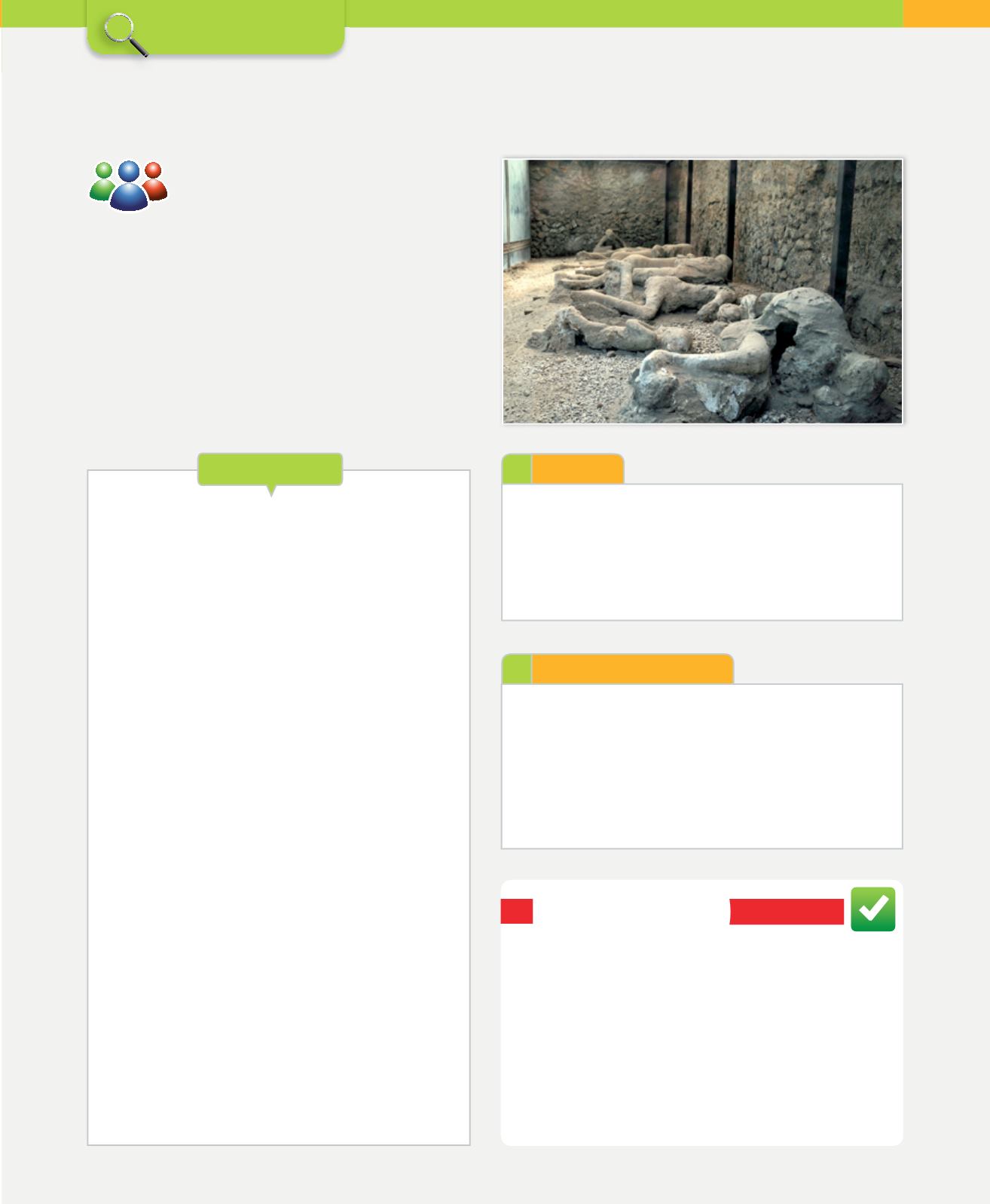
21
1. Internal geological processes
FINAL TASK
+
www
Analysis of a natural disaster
a)
Once you have chosen the disaster, find out when and where it happened,
and what the consequences were for the people living in the area.
b)
If you choose an earthquake, indicate its magnitude on the Richter scale,
its maximum intensity and its relation with the lithospheric plates.
c)
If you choose a volcano, find out the VEI, the type of eruption and if it
produced pyroclastic flows, lahars or other phenomena.
1. Research
You will write an article to present your results:
–
It should be at least two pages long and present the information you
have found in an organised way
–
Write an introduction of approximately five lines that presents the
disaster and answers the five classical questions.
–
Then describe in detail the damage and its causes, and any information
about the geological aspects that you have learned in the unit.
2. Presentation of results
Follow these steps for your research:
Search for information
❚❚
First decide which disaster you are going to investigate.
For this you can:
• Focus on one that you remember because of the
serious consequences or because it affected the area
where you live.
• Choose one mentioned in the unit.
• Do a search on the Internet using search phrases like,
‘biggest earthquakes in history’ or ‘biggest volcanic
eruptions in history’.
❚❚
Keep in mind that the more recent the disaster, the
more information there will be.
❚❚
Consult specialised webpages and in the libraries of
digital newspapers.
Organise the information
❚❚
A newspaper article must answer these five classical
questions: what, where, when, how, and why.
❚❚
Add drawings to the explanations about the geological
processes to make it easier for the readers to
understand.
❚❚
Do not forget to include in the article a map that details the
location of the catastrophe.
Obtain conclusions and verification
❚❚
Check that each image you have downloaded has a
high enough resolution and corresponds to the subject.
❚❚
Check that you have chosen an interesting title that
gets the attention of the readers and reflects the subject
correctly.
Procedure
❚
Answer the following questions to evaluate your work.
1.
Have I answered all the suggested questions?
2.
Have I paid attention to the presentation, spelling
and writing?
3.
Have I included graphic information relating to the
event?
4.
Evaluate your research task globally from 1 to 5, where
1 is insufficient and 5 means you have accomplished
all the objectives.
SELF-ASSESSMENT
Throughout history, there have been
numerous natural disasters. Some, like
the one in Pompey (in the photo) left
evidence of the terrible impact, buried
under innumerable layers of lava and ash. There are
even films, some science fiction, about these destructive
processes. Now that you know how they occur, you will
be able to do your research task.


